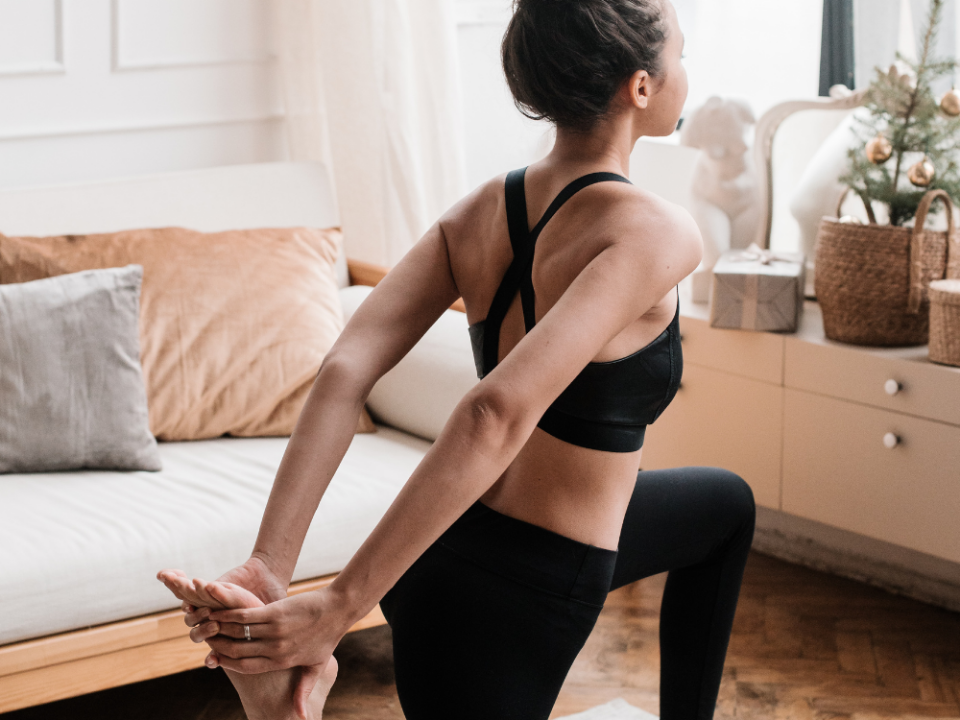Top Glute Exercises for Women: Build Strength & Shape
Posted on
Why Glute Training is Essential
Beyond Aesthetics: The Power of Strong Glutes
Everyone loves the look of sculpted glutes, but let’s talk about the real benefits—because glute training isn’t just about aesthetics. Strong glutes enhance posture, reduce injury risk, improve mobility, and increase power output in virtually every movement you do. Whether you’re an athlete, a weekend warrior, or just someone who wants to move pain-free, glute training is non-negotiable.
Schedule Your First Session Here
Why Strong Glutes Matter
Lower Back Support: Weak glutes lead to overactive lower-back muscles, resulting in chronic pain and tightness. Strengthening them offloads stress from your spine and corrects posture.
Hip & Knee Stability: If you suffer from knee pain, it may not be your knees—it’s often weak glutes failing to stabilize your movement patterns.
Enhanced Athleticism: Sprinting, jumping, lifting, and even walking efficiently rely on glute strength. The stronger they are, the more explosive you become.
Core Activation: The glutes and core work together for total-body control. A strong posterior chain means better balance, endurance, and injury prevention.
The Biggest Glute Training Mistakes Women Make
Training hard but not seeing results? You might be making one of these common mistakes.
Relying Too Much on Squats: Squats are amazing, but they aren’t the only move for glute growth. If you want maximum shape and strength, add variety—hip thrusts, lunges, and deadlifts should be in the mix.
Neglecting Glute Activation: Sitting all day? Your glutes are asleep. Without activation drills like glute bridges or band walks, you’ll be working harder for less activation and growth.
Skipping Progressive Overload: If you’re lifting the same weight every session, you’re stalling. Your glutes thrive on challenge—increase weight, reps, or intensity over time.
Ignoring Recovery: Muscle growth happens outside the gym, not during your workout. Neglect sleep, protein intake, or stretching? Expect stalled progress and tight hips.
The Best Glute Exercises for Women
Resistance Band Workouts: Activate & Burn
Resistance bands fire up your glutes before heavy lifts or can be used solo for a killer burn. Add these to your warm-up or high-rep finishers.
Banded Side Walks: Targets the glute medius for knee and hip stability.
Glute Kickbacks with Bands: Focuses on glute max activation.
Banded Clamshells: Strengthens lateral glutes for better alignment and balance.
Standing Hip Abductions: Builds hip strength and outer glute shape.
Dumbbell & Barbell Power Moves: Build & Shape
Want real glute gains? Heavy lifting is mandatory. These are the must-do exercises for sculpted, powerful glutes.
Barbell Hip Thrusts: The king of glute exercises for maximum activation.
Romanian Deadlifts: Builds glute and hamstring strength while improving posture.
Bulgarian Split Squats: Unilateral strength, balance, and serious glute engagement.
Goblet Squats: A squat variation that emphasizes glute activation at the bottom.
Dumbbell Step-Ups: A functional powerhouse for unilateral strength.
Bodyweight Burners: No Equipment, No Problem
Not near a gym? No problem—bodyweight training still delivers serious results when done correctly.
Glute Bridges: The ultimate glute activator to strengthen your posterior chain.
Single-Leg Glute Bridge: Forces unilateral glute work to even out imbalances.
Frog Pumps: A high-rep glute max activator for shaping and endurance.
Donkey Kicks: Isolates and fires up your glute max.
Fire Hydrants: Builds lateral stability and balance.
Get In Touch and Schedule Your First Session
How to Maximize Your Results
Progressive Overload & Smart Training
To build, you need to challenge your glutes consistently. Here’s how:
Increase Resistance: Gradually add weight or resistance bands.
Use Eccentric Control: Slow down the lowering phase for deeper muscle activation.
Hold & Pause: Static holds at peak contraction increase intensity.
Train Glutes 3x Per Week: More frequency equals more growth as long as recovery is on point.
Recovery & Nutrition for Bigger, Stronger Glutes
Protein First: Aim for 0.8-1g per pound of body weight for muscle recovery.
Smart Carb Timing: Fuel before and after workouts with quality carbs.
Sleep is Everything: At least 7-9 hours for maximum growth.
Mobility & Stretching: Keeps hip flexors open and prevents tightness.
The Role of Hip Mobility in Glute Training
Why Hip Mobility Makes or Breaks Your Glute Gains
If your hips are tight, your glutes can’t fully activate. That means less growth, more strain, and poor movement mechanics. The more mobility, the deeper you’re able to squat, the higher you’re able to thrust and the more you’re able to activate your workout to progress towards your goals.
Hip Mobility Drills for Better Activation
90/90 Hip Stretch: Unlocks hip rotation and deep squat mobility.
Couch Stretch: Fixes anterior pelvic tilt and tight hip flexors.
Lying Hip Rotations: Boosts mobility and lower back health.
Banded Hip Flexor Stretch: Frees up hip extension for deeper squats.
Deep Squat Hold: Teaches full range of motion and opens tight hips.
Glute Training Frequency & Sample Workout Plan
How often should you train glutes?
Beginners: 2x per week.
Intermediate/Advanced: 3-4x per week.
Key Tip: Hit different angles each session with varying exercises, like hip thrusts, deadlifts and abductions.
Sample Weekly Glute Routine
Day 1. Heavy Hip Thrusts + Band Activation.
Day 2. Bulgarian Split Squats + Glute Kickbacks.
Day 3. Romanian Deadlifts + Fire Hydrants.
Day 4. Full Lower Body Day with Squats, Step-Ups, and Isometric Holds.
Book a Free Consultation with Our Trainers
At ERAFit, we don’t do generic plans. We build custom glute programs designed for your body, your goals, and your lifestyle.
Want sculpted, powerful glutes? Book a free consultation today—your transformation starts now. It’s time to live in the body you feel inspired by.
In Conclusion
Glute training isn’t just about the aesthetics we all love—it’s about strength, performance, and longevity. Whether you’re lifting heavy, using resistance bands, or mastering bodyweight drills, consistency and progressive overload are key. Train smarter, recover better, and fuel properly—your glutes will thank you, and your confidence is sure to skyrocket.